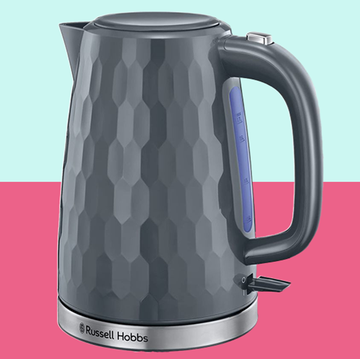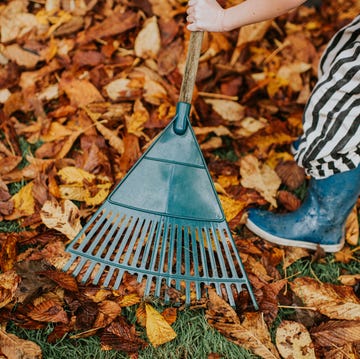It started in the rice. A small, dark moth sitting in the 10kg bag, and a fluttering of wings every time I opened the cupboard. Then came the silk webbing among the grains. Finally, the last straw – when I washed my rice, tiny larvae floated to the surface of the water. The pantry moths had arrived.
My rice – and upon investigation, many more of my dry grains, from flour to cereal – had been invaded by this tiny pest. I threw away kilos of infested foods, but somehow, they kept coming back each summer (prime pantry moth season).
Four years after the initial invasion, I’m happy to report that I'm having my first moth-free June since. These little pests are tenacious – so in order to break the cycle, I’ve had to be too. Here’s how I got rid of pantry moths once and for all.
What to read next
What are pantry moths?
But first, what are they? The pantry moth, also known as the Indian meal moth, flour moth or grain moth, is the bane of store cupboards all over the world. They're small, with a wingspan of 10-15mm, and can be identified by their half-half colouration: the wings are dark bronze at the ends and lighter brown towards the head.
These moths love nothing more than finding open food containers – such as bags of flour, pet food or nuts – to lay their eggs inside. Once the larvae hatch, they chomp on the food until they develop into adult moths. And the cycle continues...
Are pantry moths and clothes moths the same?
Pantry moths and clothes moths are different pests – though equally stressful to find in your house. Clothes moths are responsible for the holes in your favourite woollens, whereas pantry moths prefer grains. In both cases, it’s the larvae, not the adult moths, doing the actual damage.
To identify which is crawling around your home, take a closer look. Clothes moths are light beige, very narrow, and tend to avoid light. Pantry moths have that darker ‘half-half’ appearance, and fly around brazenly in a zig-zag pattern.
Confusingly, pantry moths do sometimes hide in clothing to reproduce, even though they won’t generally eat your favourite jumpers. So if your pantry moth infestation has spread beyond the kitchen, consider looking in other dark, cosy places like your wardrobe.
A case of mistaken identity? Here’s how to get rid of clothes moths.
How do you know if you have pantry moths?
If you suspect you have a pantry moth infestation, here are some of the signs to look for.
Webbing: One of the main (and earliest) signs of a pantry moth outbreak is webbing, which is spun by the larvae. Look for cobweb-like silk inside your food containers, or in the corners of your cabinets. Webbing can also cause your grains to clump together.
Larvae: Pantry moth larvae are tiny when they first hatch, and you'll struggle to see them with the naked eye. However, they can grow up to 17mm long! Look out for cream-coloured larvae with brown heads wriggling inside food packets. Yum...
Adult moths: At some point (usually in late spring or early summer), what was once a pretty innocuous-looking moth will suddenly be an all-too common visitor in your kitchen, fluttering out of cupboards and food bags and hanging out on the walls.
What do pantry moths eat?
Pantry moths will feast on a wide variety of dry plant-based foodstuffs, such as flour, rice, cereal, pasta, couscous, bread, dried fruits, seeds and nuts. Pet owners beware – that includes dry kibble and bird seed, too. They can even infest things like spices, coffee, stock cubes, soup mixes and cake sprinkles. Even the cake sprinkles.
How to get rid of pantry moths
Here is the Good Housekeeping Institute’s five-step method for getting rid of your pantry moth problem once and for all – trust me, I tried it and it worked.
1. Throw out contaminated food. If you see webbing, larvae or adult moths inside food, throw it away and take the bin out immediately.
2. Seal away your foodstuffs. A clip isn’t going to cut it here – pantry moth larvae can chew through plastic bags, paper and thin cardboard, and can even wriggle inside lids. Never leave pantry foods exposed, and only use sturdy containers with very tight seals – I recommend Kilner jars.
I’m also the proud owner of this rice dispenser, which has saved me from throwing out any more 10kg bags.
3. Deep clean your cupboards. Sweep any places that contain dry ingredients with a dustpan and brush, then thoroughly clean with white vinegar or hot, soapy water (don’t saturate unfinished wood). Moth larvae are tiny and need just a few crumbs to survive. Make sure you get into the corners and crevices, which make ideal egg laying sites.
4. Freeze any foods you’re unsure of. If you have any dry foodstuffs that don’t seem infested, but could be – or if you’re paranoid about bringing infested food home (I’ve been there) – pop it in a Ziploc bag and freeze it for a week. This will kill anything in it.
5. Be patient and thorough. Pantry moths are persistent, but if you cut off their food sources and keep cleaning, they will eventually die off. Bear in mind that they’re dormant during the winter months, not gone. So you may need to keep on top of things for a year or two before the infestation clears.
Good luck and godspeed.




















